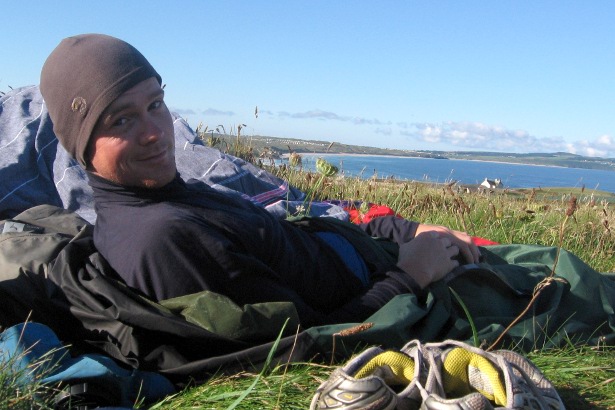
THIS ARTICLE: Will explain what exactly is meant by “bivouacing” (sometimes spelled “bivouacking”) and how you might go about “bivvying”. It talks about why you would want to bivi, who does it and and where. It discusses different types of bivi equipment and how to deal with common problems.
(Want to buy a bivi bag? See my Buyer’s Guide to Bivi Bags).
[divide]
Introduction
What is Bivouacing?
Bivouacing (or “bivouacking”) simply means sleeping outside without a tent. That could be as simple as lying down on the beach and closing your eyes for a pleasant night’s kip. Or it could be as complicated as tying yourself to the side of a mountain, wrapping yourself in down and Goretex, and hoping you stay warm enough to see it through until morning.
To achieve a basic bivouac, you really don’t need to read a whole article, you can just take a sleeping bag outside on a nice summer’s evening and sleep beneath the stars. However, for those not yet convinced or wanting to find out a little bit more about the options and the more extreme versions of the humble bivi, read on.
Is it spelled bivi or bivvy?
I have no idea. My hunch is that it’s not really a word (it’s just short for bivouac) so you can spell it whichever you like. I’m going with bivi, bivvying and bivouacing for this article but it’s spelled on all sorts of ways e.g. bivvy, bivvi, bivis, bivvies, bivouacking, bivvied and so on.
What is a Bivi?
A bivi can an item, an action and a place. You might have a bivi bag, that you used to bivi last night at a bivi spot. (That means you can “use your bivi to bivi at a bivi” – one for Joshua Ferris perhaps?)
Why Bivi?
Some of the great reasons for bivvying are more exaggerated versions of the reasons you might camp. Camping allows you to reach wild places and be closer to nature, bivvying does more of the same. Some other
- Bivi kit is invariably smaller and lighter than camping kit.
- It is far quicker to set up in the evening and strike in the morning.
- You can sleep in much smaller spaces – on tiny cliff ledges or between bumps on ground too lumpy for a tent.
- Bivvying is more discreet than pitching a tent.
- In good weather, you don’t have the cramped conditions of a tent.
- You can see the stars every time you wake up.
Who Bivvies?
Anyone who you might camp, might consider a bivi instead.
Bivouacing is particularly common for alpine mountaineers who need to spend a night, or part of a night, out on the mountain but don’t want to carry heavy kit or won’t have room to pitch a tent. Such situations can provide spectacular settings but can also be cold and uncomfortable as the alpinist is invariably striving for the minimum weight in their packs.
Adventure racing and long-distance running might also call for a bivouac as, once again, space and weight in the rucksack become premium.
I’ve used mine with friends walking the South West Coastal Path for many years. It’s so much easier to stumble out of a pub in the dark and find a discreet spot for a bivi bag than it is with a tent.
Where can you Bivi?
With a bivi bag you can sleep just about anywhere. I have slept on beaches and in woods, on cliff-tops and mountain-tops, in car parks and beneath dual carriageways. Some of my favourites are listed here.
[divide]
Bivi Kit
As stated, in good weather, you can perform a basic bivi with nothing more than the clothes you’re wearing. However, other situations may require some other bits and pieces.
Sleeping bag and mat
What sleeping bag you choose depends entirely on the situation. If you are going lightweight then tiny down sleeping bags can pack to the size of a pint of milk (and weigh less than one). Alternatively, taking warm clothes or a down jacket and just a silk liner is another option to minimise pack weight.
For sleeping mats, cheap foam ones are great. More expensive self-inflating mats save space. Lightweight enthusiasts sometimes stoop to using bubble wrap or even inflating several long balloons to create a lilo.
Bivi Bags
At its most basic, a bivi bag is large sack that you climb inside to provide some protection from the elements. If you think of a body bag then you’re not far off.
(UPDATE JULY 2014: Since writing this guide, I’ve produced a detailed comparison of all the different types of bivi bags complete with sizes, weights and costs. Read it here).
Orange Survival Bag
At the bottom of the pile is the plastic orange survival bag. They cost only a few quid and are totally water- and wind-proof. However, they do not breathe which means that the moisture you give off during sleep will accumulate inside and likely make you wet. (Ronald Turnbull gives an excellent guide to getting the best performance from an orange bag).
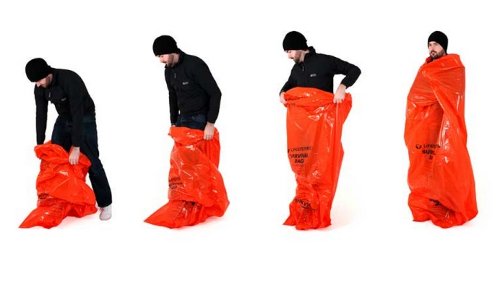 Ex-Army Bivi Bags
Ex-Army Bivi Bags
These are just large, green Goretex bags with a drawcord at the top. They’re not the smallest or lightest but they are cheap, tough and an excellent place to start. Try Ebay. My wife has one of these as do several of my friends.
Similar alternatives come from Rab’s Ascent bivi (made with eVent rather than Goretex) and Alpkit’s Hunka.
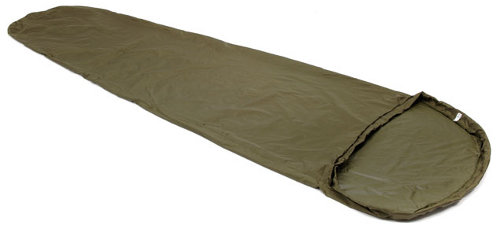 Cheap coated-nylon bags
Cheap coated-nylon bags
There are a few companies that produce very cheap bivvies made from a coated nylon. They tend to be pretty light and pack down small. The downsides to these are likely comparatively poor breathability and durability, both of which are reasonably significant for the bivouacer as condensation can be a real issue and dragging the bag across rocks and the like is not uncommon.
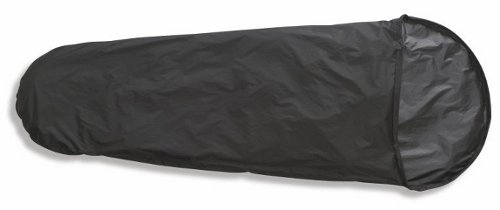
Hooped bivvies
The luxury option is to take a bivi which has one small hoop. This has the advantage of creating space inside and allows you to zip up when it rains and not have the bag flat against your face. It’s a little claustrophobic the first few times but you soon get used to it. Keeping shape also allows better air flow which reduces condensation. I’ve had a Terra Nova Jupiter for over 10 years.
Having a hoop obviously adds weight and requires a modicum more time and effort to set up. You can, of course, use the same bivvy without a hoop (for example if you’re pretty sure the weather’s going to be nice).
Another type of bivi bag are the lighter, non-waterproof types (like Rab’s Survival Zone) that tend to be either used inside a tent as a protection for a precious down sleeping bag and a bit of extra warmth, or when climbing at altitude where it’s likely to be cold and dry.
Beginner’s Bivi Kit
If you want to give bivvying a try without forking out loads then a good place to start would either be looking on Ebay for an ex-army bag or, easier still, visit GoOutdoors. For use in mild weather you can get a self-inflating mat, summer sleeping bag and waterproof bivi for £65 or even less if you get a solid foam roll mat instead (N.B. no affiliation with GoOutdoors, I just noticed how cheap their stuff is).
[divide]
The Bivi Bag Buyer’s Guide
Tempted to bivouac? Check out my guide to buying a bivi bag. They start from £4 and you can get a decent one from about £25. Read the Bivi Bag Buyer’s Guide now >>
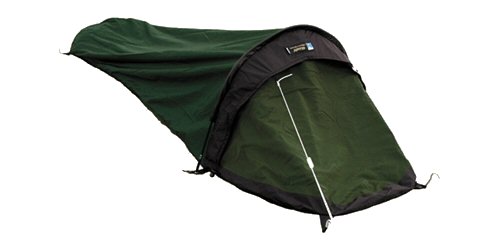
What do you think? Please do add your thoughts below…